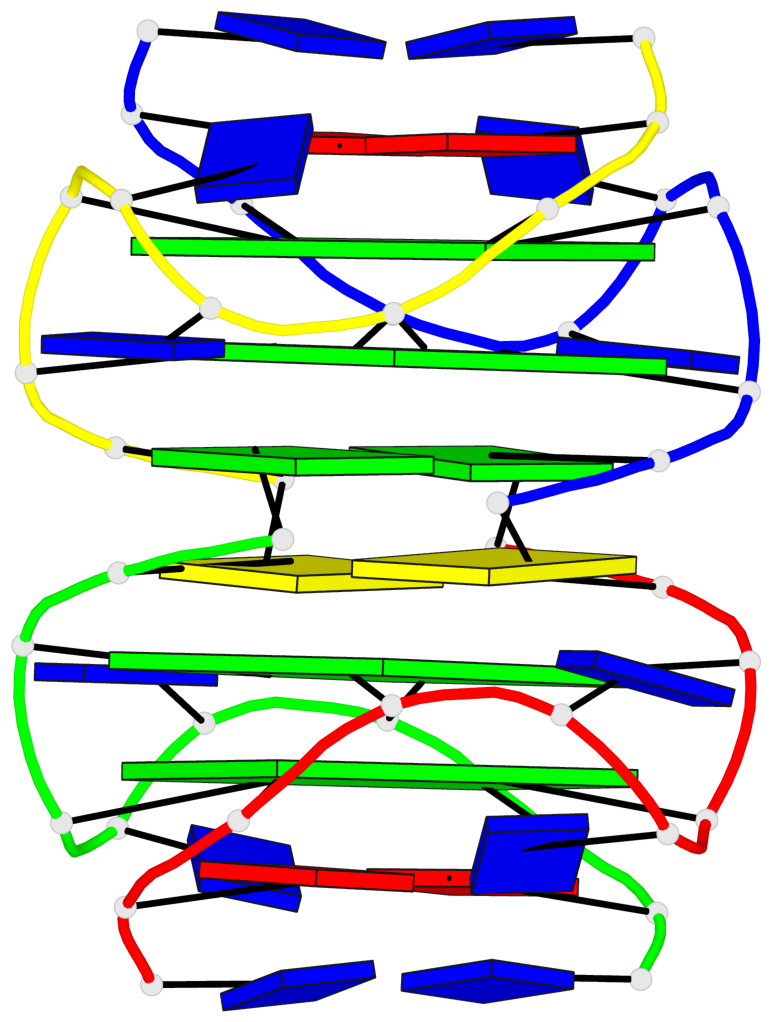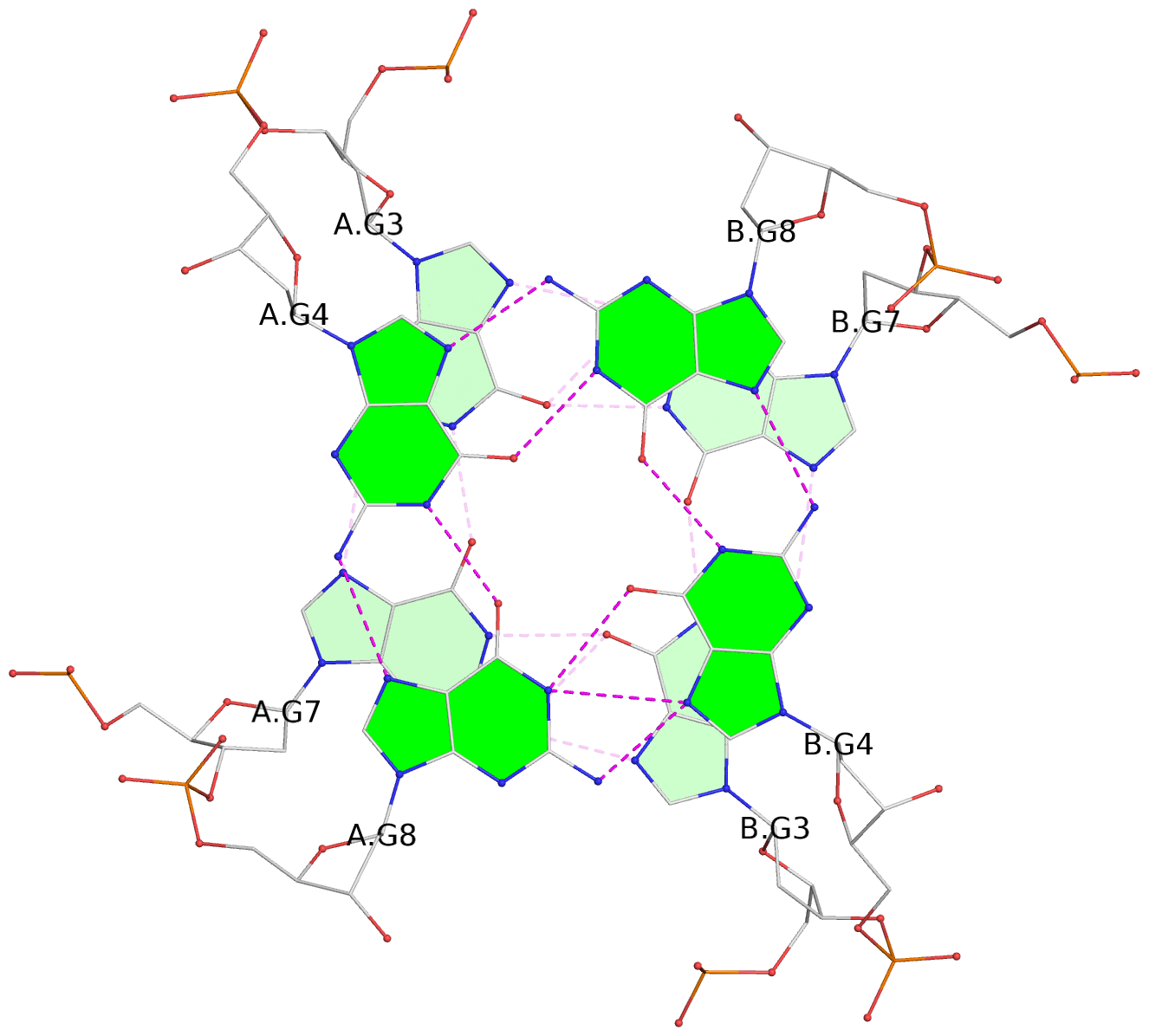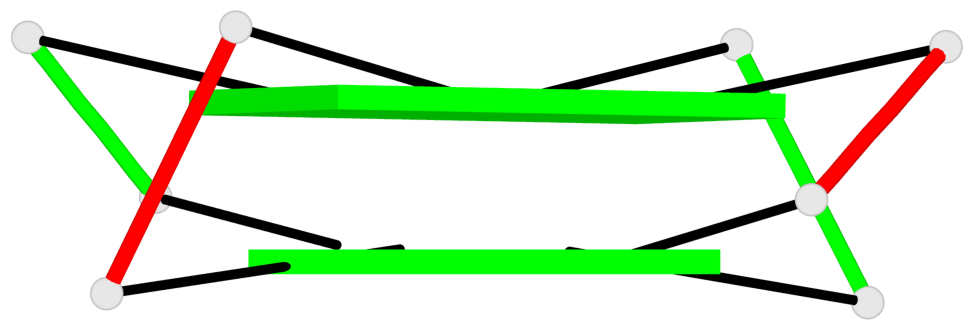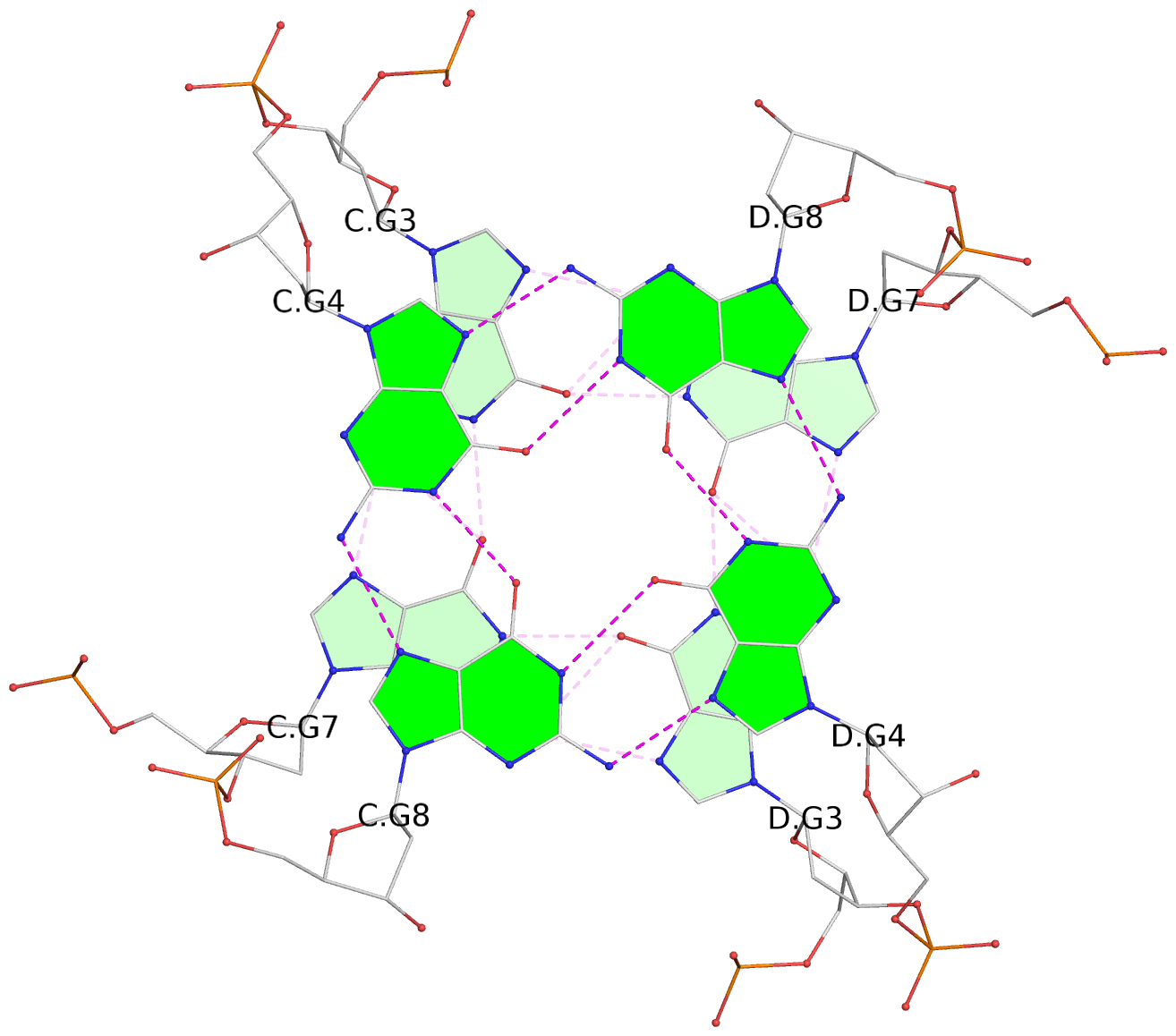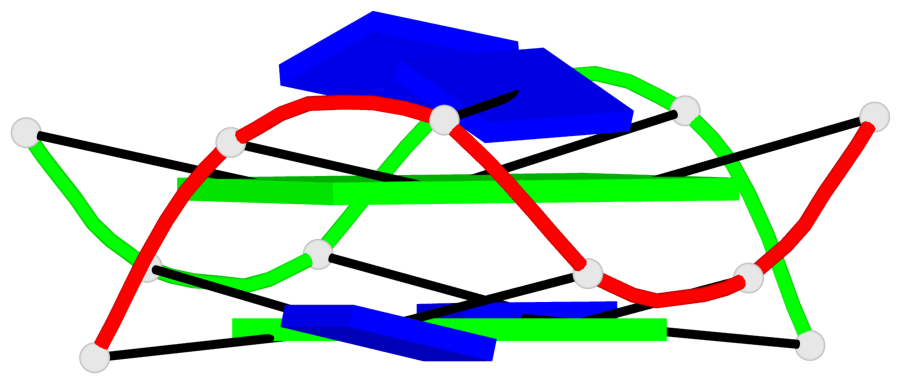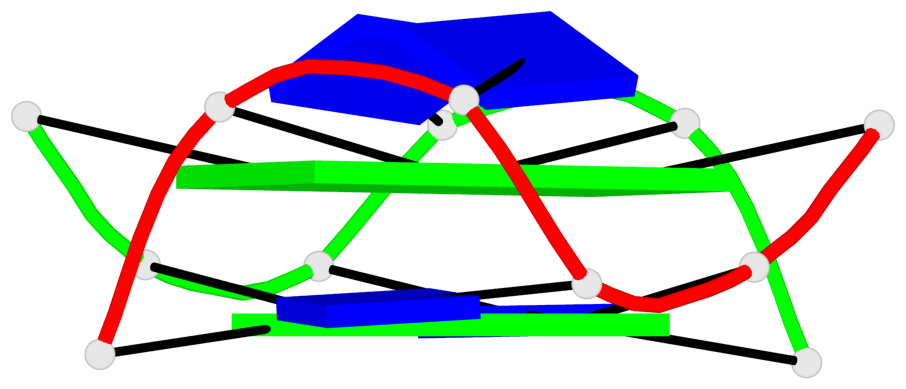Detailed DSSR results for the G-quadruplex: PDB entry 1xce
Created and maintained by Xiang-Jun Lu <xiangjun@x3dna.org>
Citation: Please cite the NAR'20 DSSR-PyMOL schematics paper and/or the NAR'15 DSSR method paper.
Summary information
- PDB id
- 1xce
- Class
- DNA
- Method
- NMR
- Summary
- Helica structure of DNA by design: the t(gggg)t hexad alignment
- Reference
- Webba da Silva M (2005): "Experimental Demonstration of T:(G:G:G):T Hexad and T:A:A:T Tetrad Alignments within a DNA Quadruplex Stem." Biochemistry, 44, 3754-3764. doi: 10.1021/bi0478190.
- Abstract
- A template-based approach was used to design unprecedented architectural motifs into a known DNA framework. The structure formed by the sequence d(GCGGTTGGAT) in 0.1 M Na(+) solution has been determined using molecular dynamics simulations constrained by distance and dihedral restraints derived from NMR experiments. The molecular topology has been previously observed for the sequence d(GCGGTGGAT) (Webba da Silva, M. (2003) Biochemistry 42, 14356-65). Insertion of a single thymine into the double chain reversal formed by the segment GGTGG results in the unprecedented experimental demonstration of a T:(G:G:G:G):T hexad. The bi-stranded hexad results from the pairing alignment of two G(T-G) triads. Each triad results from recognition of the sheared edge of a guanine by the Watson-Crick edge of a thymine of the segment GGTTGG. The alignment is stabilized by base-stacking of the thymine to the sugar pucker of the preceding thymine. The latter is involved in formation of the T:A:A:T tetrad alignment by forming a hydrogen bond with the free amino proton of a Watson-Crick aligned A:A mispair. We have thus established that residues in double chain reversal loops linking juxtaposed tetrads of a quadruplex stem may facilitate formation of yet unknown hydrogen bond alignments. By employing a systematic approach analysis of sequence motifs appearing in double chain reversals, bridging tetrad layers should allow for the prediction of topologies and architectural motifs appearing in biologically relevant genomic regions.
- G4 notes
- 4 G-tetrads, 2 G4 helices, 2 G4 stems, parallel(4+0), UUUU
Base-block schematics in six views
List of 4 G-tetrads
1 glyco-bond=---- sugar=.3-3 groove=---- planarity=0.280 type=other nts=4 GGGG A.DG3,A.DG7,B.DG3,B.DG7 2 glyco-bond=---- sugar=---- groove=---- planarity=0.040 type=planar nts=4 GGGG A.DG4,A.DG8,B.DG4,B.DG8 3 glyco-bond=---- sugar=.3-3 groove=---- planarity=0.315 type=other nts=4 GGGG C.DG3,C.DG7,D.DG3,D.DG7 4 glyco-bond=---- sugar=---- groove=---- planarity=0.024 type=planar nts=4 GGGG C.DG4,C.DG8,D.DG4,D.DG8
List of 2 G4-helices
In DSSR, a G4-helix is defined by stacking interactions of G-tetrads, regardless of backbone connectivity, and may contain more than one G4-stem.
Helix#1, 2 G-tetrad layers, inter-molecular, with 1 stem
Helix#2, 2 G-tetrad layers, inter-molecular, with 1 stem
List of 2 G4-stems
In DSSR, a G4-stem is defined as a G4-helix with backbone connectivity. Bulges are also allowed along each of the four strands.
